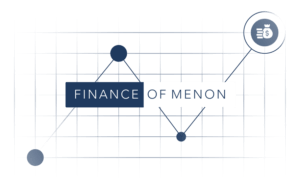When managing a portfolio, two key factors can significantly impact long-term wealth accumulation: investment performance and tax efficiency. To measure these, two powerful tools can be used: Time-Weighted Return (TWR) and Lifetime Effective Tax Reduction. Understanding these methods can help you make smarter decisions, optimize returns, and minimize tax liabilities over time. Here’s a simplified breakdown of how this works:
1. Time-Weighted Return (TWR)
What It Measures: Time-Weighted Return (TWR) focuses on assessing the performance of an investment portfolio without accounting for cash flows, such as deposits or withdrawals. This makes it an ideal metric for comparing different portfolios or investment managers, as it isolates their decision-making ability from the influence of external factors.
How It’s Calculated:
- TWR calculates returns on a daily basis and links them together to provide an overall return for a specific period.
- Each day’s return is based on the change in the portfolio’s value from the start of the day to the end, adjusting for any cash flows.
- The daily returns are compounded (geometrically linked) to reflect the total return over the investment period.
- Portfolio TWR is compared to all relevant benchmarks see how it calibrates.
Example Use: TWR is useful to evaluate fund managers’ performance because it eliminates the impact of when cash is added or withdrawn. This ensures the focus remains solely on the manager’s ability to generate returns. Ultimately, a good mental framework here is to always be skeptical of the short term results, whether good or bad.
2. Lifetime Effective Tax Reduction
What It Measures: This metric tracks the average tax rate an individual pays over their lifetime, with a focus on reducing the overall effective tax burden. By implementing strategies to lower taxes, investors can retain more of their earnings and optimize long-term wealth growth.
How It’s Achieved:
- Strategies such as tax-loss harvesting, Roth conversions, and shifting income into lower tax brackets are often employed to reduce the effective tax rate.
- The aim is to reduce the portion of income or investment gains lost to taxes, allowing more money to remain invested or available for personal use.
Example Use: Investors use this method to ensure their tax strategy is as efficient as possible, incorporating it into broader wealth planning strategies to minimize taxes paid throughout their lifetime. This becomes a critical component of long-term financial health, particularly for high earners or those with complex financial portfolios.
Bringing It All Together
By leveraging both TWR and Lifetime Effective Tax Reduction, investors can maximize their financial outcomes. TWR provides a clear measure of how well investments are performing, free from the distortions of external cash flows. Meanwhile, reducing your lifetime effective tax ensures more of your gains are retained, enhancing your overall wealth.
Incorporating these two measurement methods into your investment strategy can help you focus on both performance and efficiency. Whether you are managing your own portfolio or working with an advisor, these tools offer valuable insights into how to make the most of your money over time. Always be an efficient capital allocator by measuring the outcomes rigorously.
Disclaimer: Nothing here should be considered investment advice. All investments carry risks, including possible loss of principal and fluctuation in value. Finomenon Investments LLC cannot guarantee future financial results.






